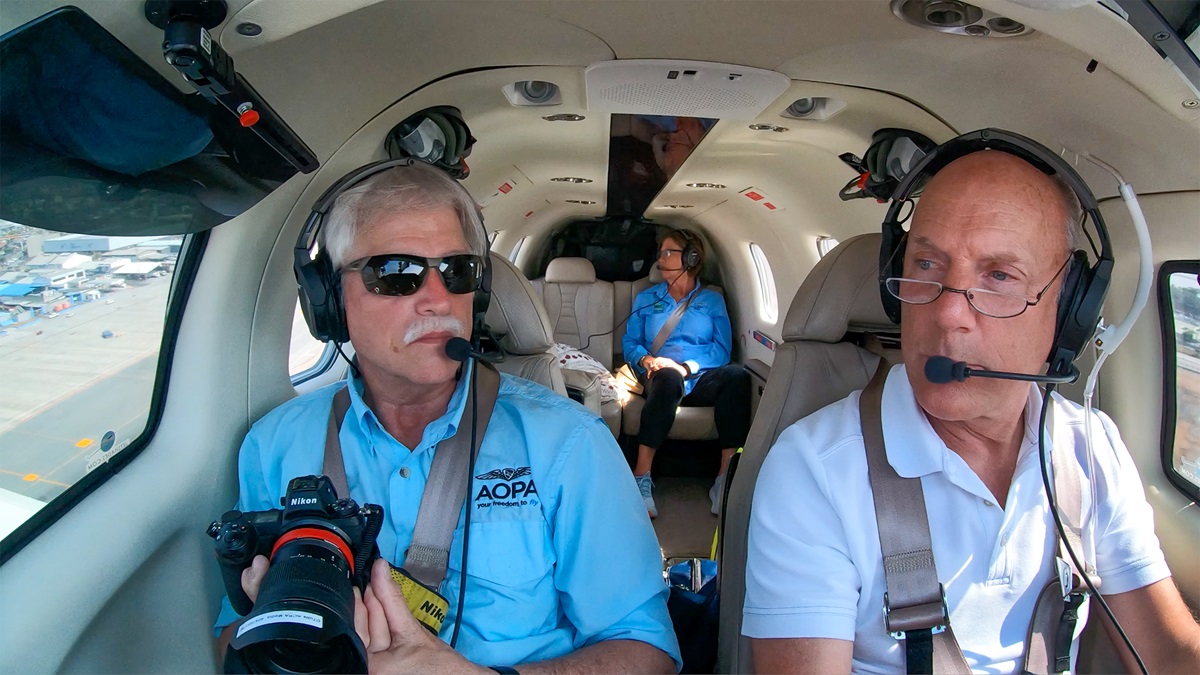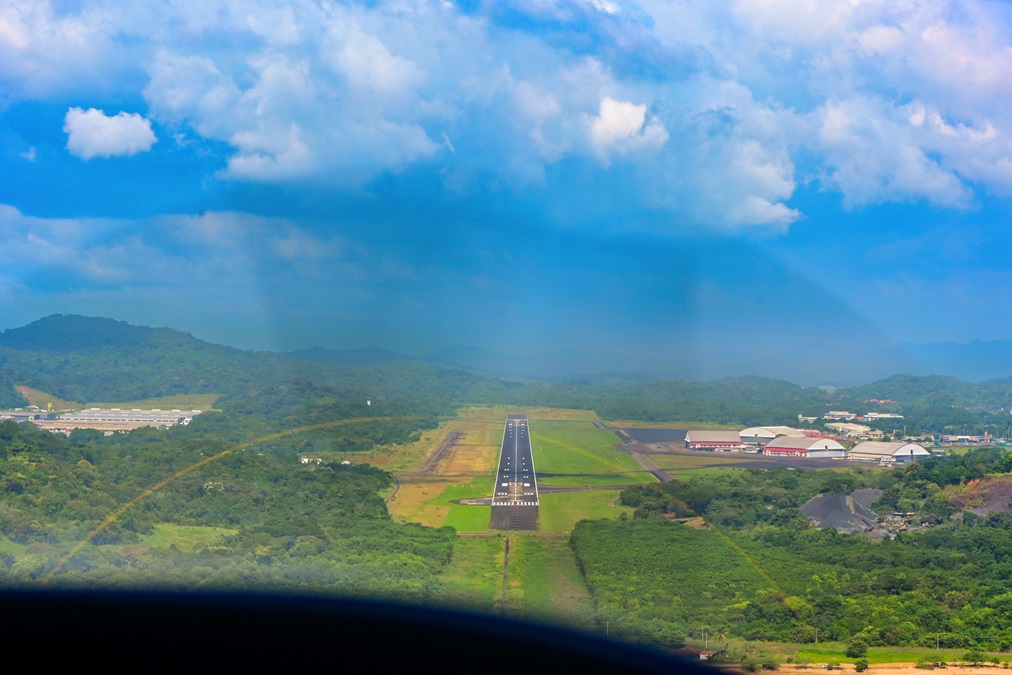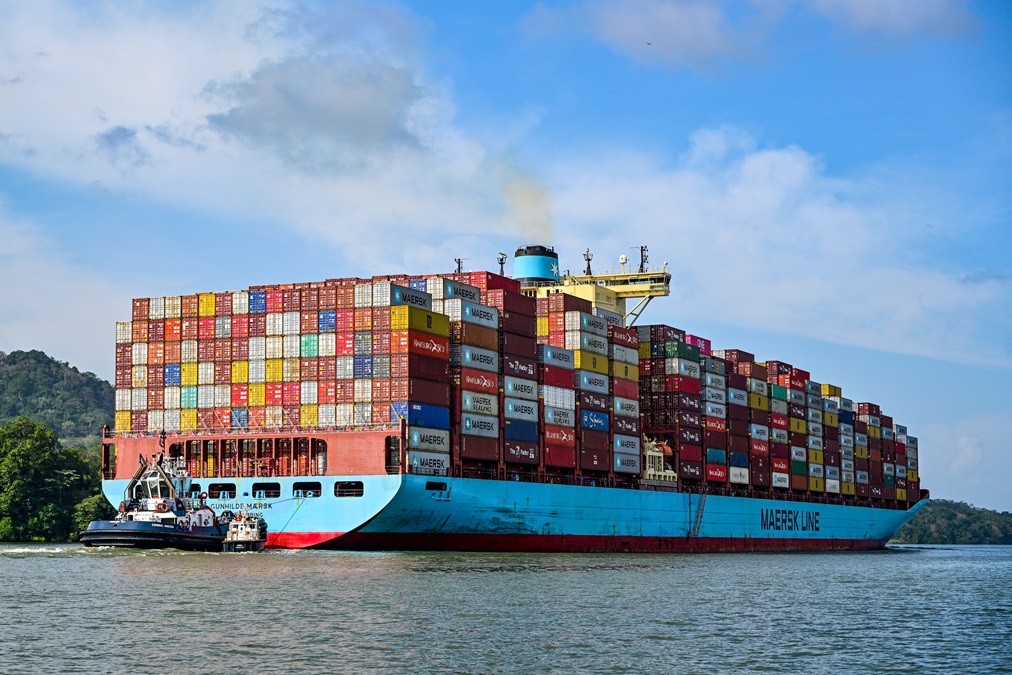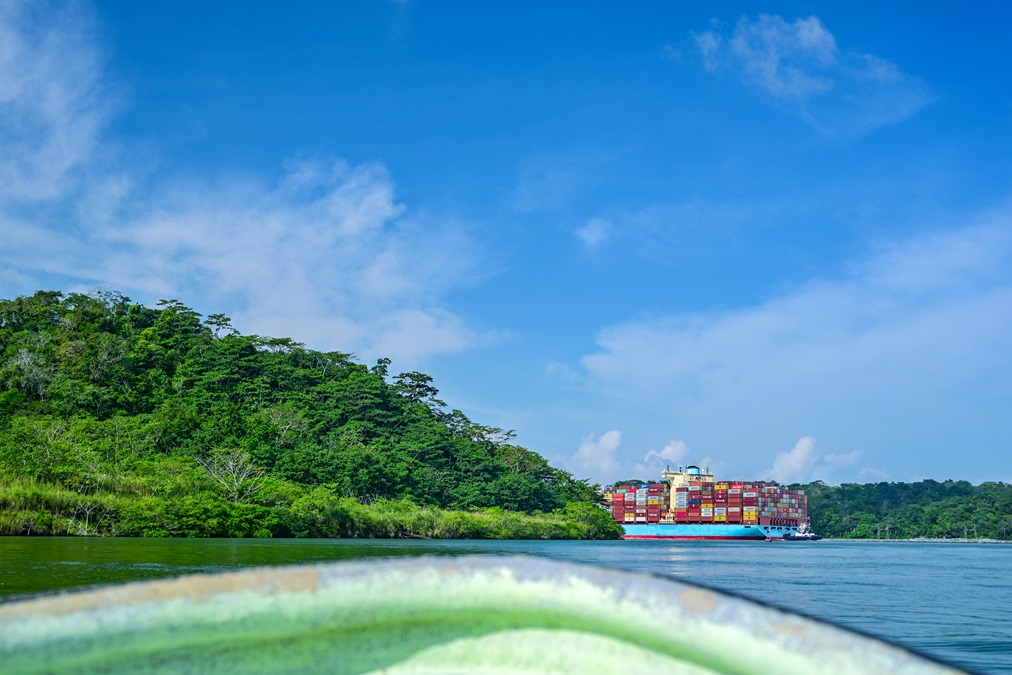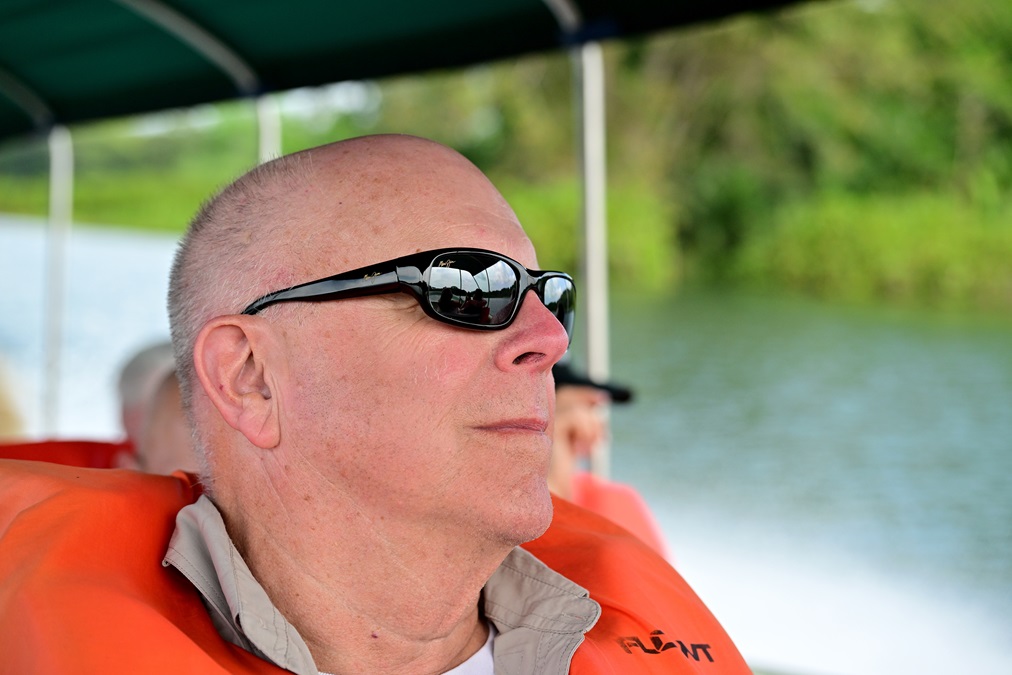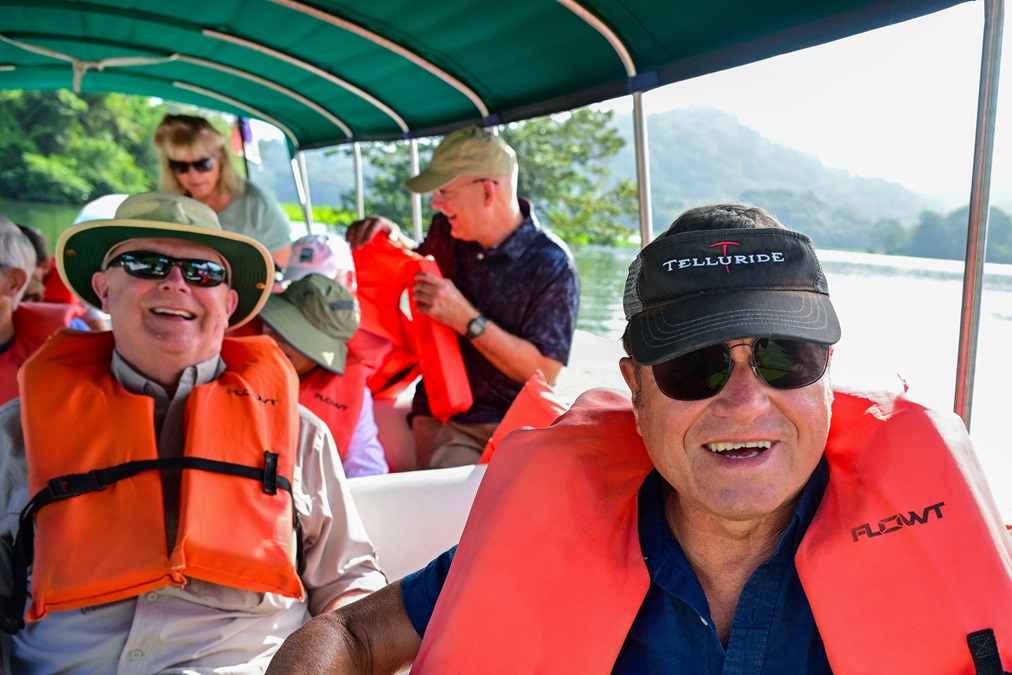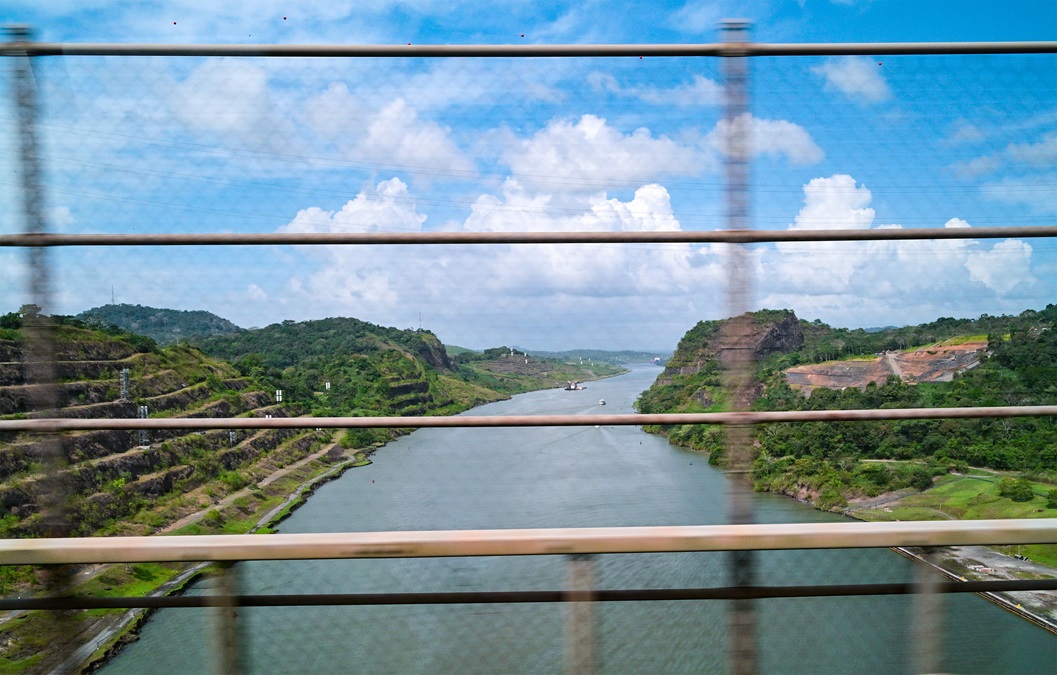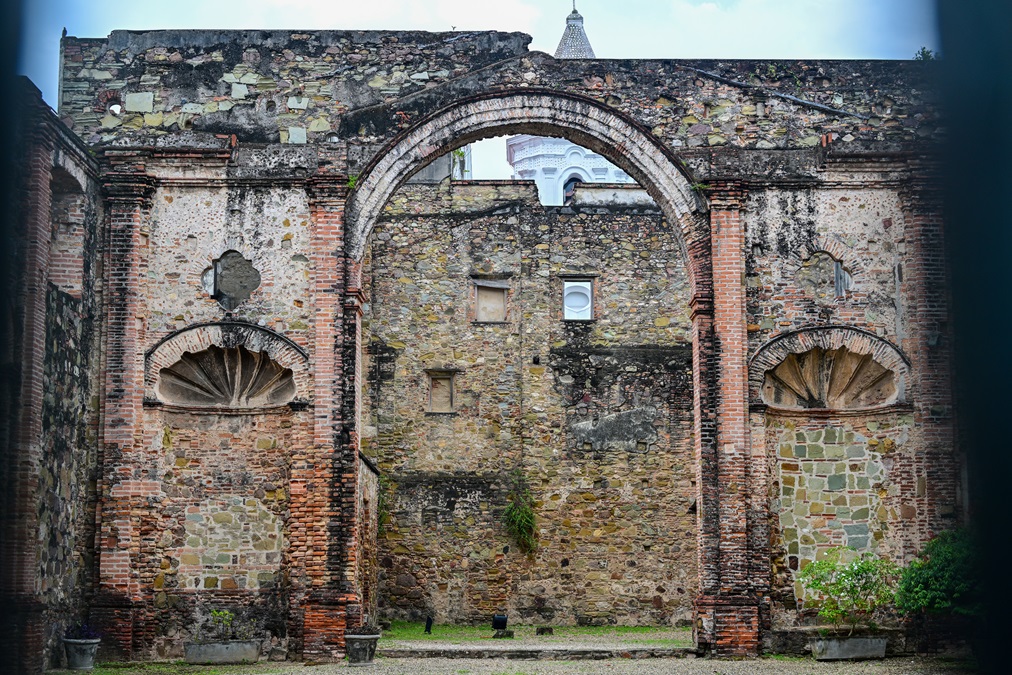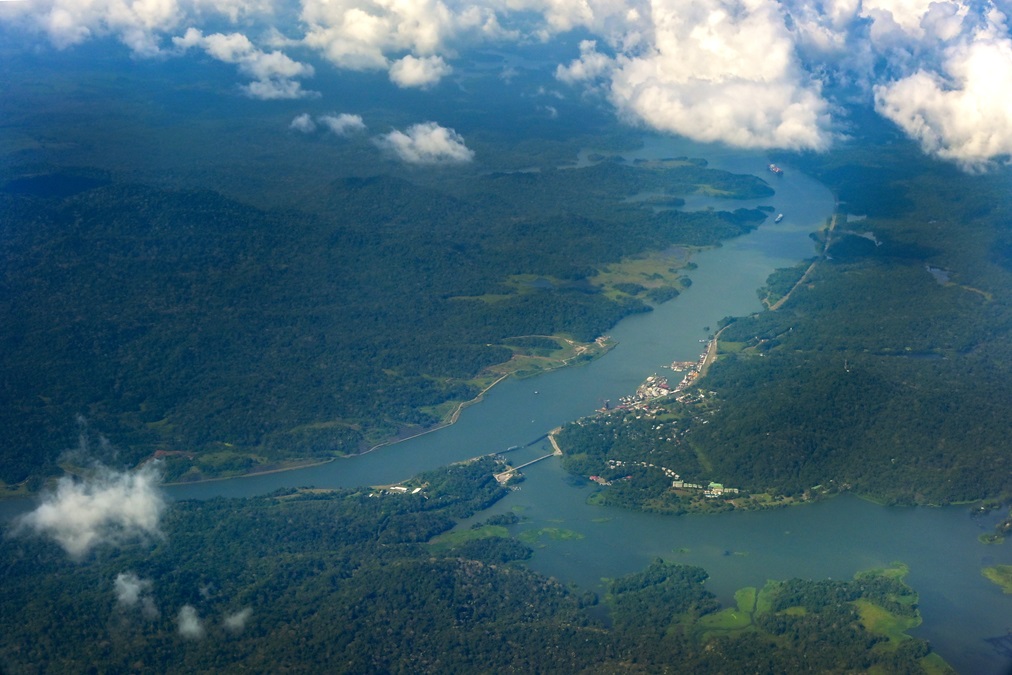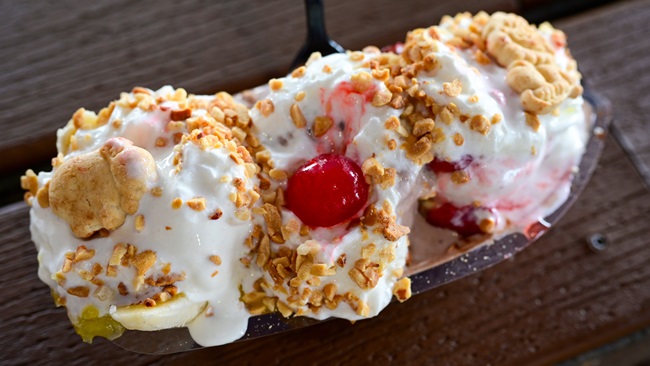Visiting the canal that shrank the world
Panama City tour with Air Journey
You might not think of it this way, but Panama, and its capital, Panama City, are critical links between North and South America.
Should you be passing to or from destinations north or south, a stop in Panama City makes a lot of sense. AOPA Senior Photographer David Tulis and I were lucky enough to make a stop in Panama City on the way home from an Air Journey visit to the Galápagos Islands in December. We were surprised, and educated, by the sights there.
The Balboa airport has avgas as well as Jet A, plus a big ramp. You’ll clear customs nearby, and after calling a cab you’ll be on your way to the city. We stayed in the “old city,” which dates back to the sixteenth century when the Spanish empire ruled. We stayed in the hotel Sofitel Legend Casco Viejo. Built in 1917, the Casco Viejo had just reopened when we arrived, so it was spacious, elegant, and up to date. Plus, it was located right on the Pacific Ocean shore. It’s pricey, but worth it. You could open your hotel room door and look down on the plantings in the huge courtyard, the pool, and the beach—except when the tide comes in and the ocean covers it.
A tour of the old city lets you visit a number of trendy and historical sites. Sprinkled throughout are attractive marketplaces and parks, restaurants, and shops. You’re bound to notice the height of the curbs in the old city. They can reach almost a foot above street level, and they’re a subtle hint of Panama’s climate. Torrential rains are common in the summer months, and the streets become rivers. So here’s a tip: Visit in the winter months, when the dry season prevails.
Every once in a while you’ll come across a dilapidated gap between two newer buildings. Perhaps they’re left behind from the days when the pirate Henry Morgan attacked the city. Rather than have him take any spoils, the governor vowed to burn down the city—so he spread barrels of gunpowder and set them off.







Of course, this isn’t the only detail in Panama’s long history. The main attraction is, of course, the Panama Canal. It’s a 51-mile-long wonder with three sets of locks and an artificial lake—Gatun Lake—made to lift ships between locks. In 1881, the French began the first attempt to create the canal, but the effort collapsed in a financial scandal. That, and some 20,000 deaths from yellow fever and malaria, left the minimal work lying fallow. The United States took over the effort in 1904, and by 1914 the first ships were moving between the Atlantic and Pacific. The American work brought with it a major medical breakthrough: Army physician Walter Reed identified mosquitos as the transmitters of yellow fever.
By the way, anyone interested in the tortured history of the Panama Canal’s construction should read David McCullough’s The Path Between the Seas: The Creation of the Panama Canal, 1870-1914, a carefully documented and fascinating rendition of the challenges faced by the canal’s builders.
Trips down the canal are must-do items. Tulis and I boarded a covered launch with several other tourists and set out on Gatun Lake. A knowledgeable guide held forth on points of interest, and we even cruised by the dense, jungle shoreline. A word to the wise: Don’t bring any food on these trips; the guides will give you drinks, but that’s about it.
Why no food? Our boat paused along the shore, and it wasn’t long before we saw movement in the trees. Howler monkeys. Their aerial hijinks are very entertaining as they leap from branch to branch, but make no mistake: They’re checking us out for food. Stories abound of monkeys boarding boats to make “raids” for food. We were spared. We had no food, and the monkeys could tell.
Out on the lake, don’t be surprised by passing ships. On our trip, a giant container ship that must have been 10 stories tall glided by, packed with hundreds of containers.
Back at the Casco Viejo, we packed up and went back to the Balboa airport for our departure. Then came a final treat: Our route took us the length of the Panama Canal. It was quite a sight to take in the entire engineering marvel in one glance. If you’re ever in the neighborhood don’t miss it.



